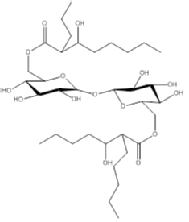Angharad Rosser-James
I graduated with a BSc (Hons) in Environmental Technology from Nottingham University a number of years ago, then after spending some time working in the voluntary environmental conservation sector I when into teaching and taught A Level Environmental Science. I left teaching to look after my daughter full time in 2009 before returning to study on the AS:MIT course.
I chose this course as I did not want to go back to teaching and I had enjoyed the chemistry aspects of my first degree the most, and I thought the AS:MIT course would be a good route for me into a chemistry career with a non-chemistry background.
My research project
I am currently undertaking a research project jointly in Tim Bugg’s and Christophe Corre’s group, investigating the structure of biosurfactants produced by Rhodococcus bacteria and identifying signalling molecules for specific bacteria.
The process has involved growing bacteria, extracting the natural products they produce, and analysing them by various methods e.g. LC-MS and NMR. The types of molecule that the bacteria are thought to produce are glycolipids, an example of which is shown below.

Biosurfactants are amphiphilic in nature and typically contain a hydrophilic moiety (in this case a disaccharide) and a hydrophobic component e.g. long chain fatty acid. Their mode of action is to align themselves at the interface between two fluid phases e.g. oil and water. This action allows them to reduce surface and interfacial tension and so they can act as detergents, emulsifiers or foaming and dispersing agents. Biosurfactants are of increasing interest to many industries due to their low toxicity and potential multi-functional uses compared to synthetic surfactants. For biosurfactants to be a viable commercial alternative to synthetic surfactants, methods for economic production must be developed. Hence, the aim behind this project is to identify a new bacterium that could be a potential source of a biosurfactant.
